Pueblos Mágicos facts for kids
The Pueblos Mágicos Program (which means "Magical Towns Program" in Spanish) is a special plan started by Mexico's government. It's designed to show off towns across the country that are rich in culture, history, amazing food, cool crafts, and friendly people. The main goal is to bring more visitors to these smaller, often rural, towns.
This program helps people discover small towns where they can see unique local crafts, beautiful landscapes, and other fun things. The government created the 'Pueblos Mágicos' program to celebrate places that have special qualities and traditions. These towns offer "magical" experiences to visitors. A "Magical Town" is a place full of interesting stories, history, important events, festivals, and traditions. It also has great food and fun shopping. In short, it has a special "magic" in its culture and offers wonderful chances for tourism.
The program began in 2001. After nine years, with 32 towns chosen, it was improved and relaunched in 2010. The government added more money to help local efforts and made it a top priority. Each town received a budget to improve its buildings, look, and visitor experiences. They also made sure the towns kept their traditions and promoted their festivals. By 2012, 83 towns and villages in all 31 states had earned the "Pueblo Mágico" title. This program made local people proud, recognized their towns, and helped share Mexican culture and traditions with more visitors.
In late 2018, there were talks that the program might stop. However, in February 2019, a government official said the program would continue "more strongly than ever." Now, the tourism ministry still decides which towns can become Pueblos Mágicos and promotes the program. But state governors are in charge of giving money to projects in these towns.
On December 1, 2020, 11 new Pueblos Mágicos were added, bringing the total to 132. This included Mexcaltitán, one of the first "Magical Towns," which got its title back after losing it in 2009. As of August 1, 2023, there are 177 Pueblos Mágicos across all 31 Mexican states.
Contents
Why the Program Exists
The main goals of the Pueblos Mágicos program are:
- To offer more diverse and interesting places to visit inside Mexico, especially towns with important history and culture.
- To expand the types of tourism available in the country.
- To create and promote local crafts and support traditional festivals.
- To protect local traditions, culture, unique customs, and special foods.
- To help create new tourist activities like adventures, outdoor sports, ecotourism, festivals, local tours, food and wine events, and fishing.
- To make these towns even better and more popular for both Mexican and international visitors.
- To create jobs and help reduce poverty in these communities.
- This program also celebrates the hard work of local people who have kept their towns' cultural and historical treasures alive.
How a Town Becomes "Magical"
To be considered for the program, towns need to meet certain requirements:
- A town should have at least 5,000 people living there.
- It should be located no more than 300 kilometers (about a three-hour drive) from a city with good transportation or a strong market.
- The town's local and state governments must ask the Secretariat of Tourism to join the program. Then, officials will visit to see if the town has what it takes.
Here are some specific things towns need to have:
- A special group called a "Pueblo Mágico committee." These are citizens who represent the town. If the town is accepted, this group helps make sure the town keeps its "Magical" title. They work with local people to make sure the program helps everyone. This group should have different kinds of people, no more than 15, who are willing to volunteer their time. Members should change every now and then.
- An official agreement from the town council. This shows that local leaders support joining the program, which is very important for its success.
- Support from the state government. State help is needed to provide money, especially for improving things like roads and buildings.
- Money set aside for tourism projects. Each town must try to be different from other towns. Their plans should highlight what makes their town special.
- An updated plan for tourism development that lasts at least three years. This long-term plan helps make sure the town keeps improving for tourists. The plan should be updated every three years.
- Local rules and laws should be updated to focus on tourism. This helps protect visitors and people who work in tourism.
- Proof of what makes the town special or unique.
- Available health and safety services for tourists in case of an emergency.
- Records of private and community money spent on tourism, like hotels, restaurants, tours, and museums.
- Other things that the committee thinks are important for tourism.
The Selection Process
Here's how a town gets chosen:
- The town's citizens' committee and other important people gather all the needed documents and send their request to the Secretary of Tourism and the evaluation committee.
- They give a formal presentation with examples and details to the evaluation committee in Mexico City.
- The official committee includes people from the Secretariats of Tourism, Culture, Environment, and other government offices.
- The evaluation committee checks all the documents, makes sure everything is met, and visits the town in person. They then write a report about what they found.
- If all requirements are met, they approve the town. Then, the Secretary of Tourism visits the town, invites local leaders and residents, and officially announces the new "Magical Town." At the same time, the local committee takes an oath to represent the town's citizens.
- The local citizens and the committee are responsible for keeping the town's "magic" alive. The "Magical Town" title is not forever; some towns are checked every year.
- If a town doesn't meet all the requirements, the committee shares the details, and the town is asked to provide any missing information.
- If a town simply cannot meet the needed qualities, the committee sends a formal letter explaining why.
Mexico has more than 2,500 local areas, and hundreds apply to this program every year. Only a few are chosen. This is a very successful and respected program that brings many good things to local people, like more money and other benefits for their communities.
List of Magical Towns
| # | Image | Town | State | Year Added |
|---|---|---|---|---|
| 1 | 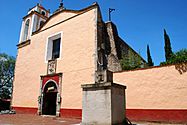 |
Huasca de Ocampo | Hidalgo | 2001 |
| 2 | 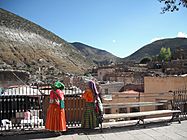 |
Real de Catorce | San Luis Potosí | 2001 |
| 3 | 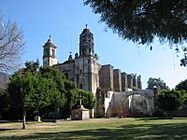 |
Tepoztlán | Morelos | Added in 2001, title removed in 2009, but given back in 2010 |
| 4 | 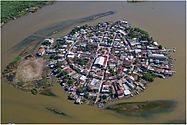 |
Mexcaltitán de Uribe | Nayarit | Added in 2001, title removed in 2009, but given back in 2020 |
| 5 | 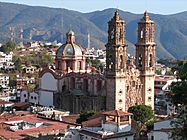 |
Taxco | Guerrero | 2002 |
| 6 | 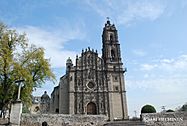 |
Tepotzotlán | México | 2002 |
| 7 |  |
Tapalpa | Jalisco | 2002 |
| 8 | 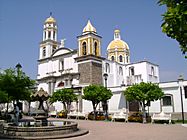 |
Comala | Colima | 2002 |
| 9 |  |
Pátzcuaro | Michoacán | 2002 |
| 10 | 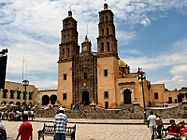 |
Dolores Hidalgo | Guanajuato | 2002 |
| 11 | 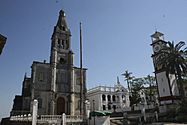 |
Cuetzalan | Puebla | 2002 |
| 12 | 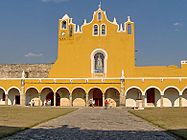 |
Izamal | Yucatán | 2002 |
| 13 | 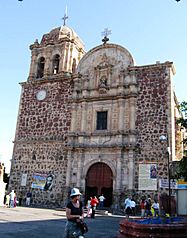 |
Tequila | Jalisco | 2003 |
| 14 | 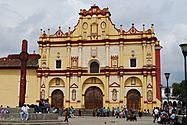 |
San Cristóbal de las Casas | Chiapas | 2003 |
| 15 | 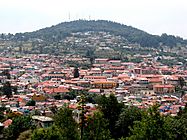 |
Real del Monte | Hidalgo | 2004 |
| 16 |  |
Parras de la Fuente | Coahuila | 2004 |
| 17 |  |
Valle de Bravo | México | 2005 |
| 18 | 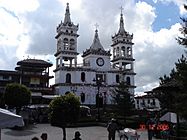 |
Mazamitla | Jalisco | 2005 |
| 19 | 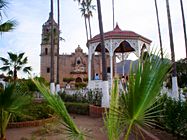 |
Álamos | Sonora | 2005 |
| 20 |  |
Tlalpujahua | Michoacán | 2005 |
| 21 | 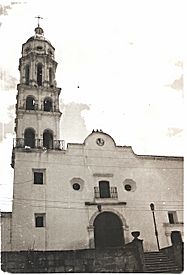 |
Cosalá | Sinaloa | 2005 |
| 22 | 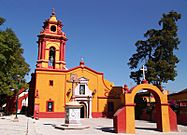 |
Bernal | Querétaro | 2005 |
| 23 | 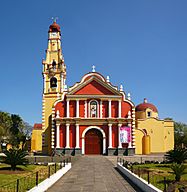 |
Coatepec | Veracruz | 2006 |
| 24 | 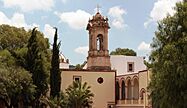 |
Real de Asientos | Aguascalientes | 2006 |
| 25 |  |
Cuitzeo | Michoacán | 2006 |
| 26 | 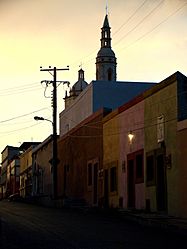 |
Santiago | Nuevo León | 2006 |
| 27 |  |
Todos Santos | Baja California Sur | 2006 |
| 28 | 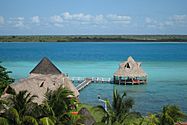 |
Bacalar | Quintana Roo | 2006 |
| 29 | 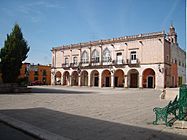 |
Jerez de García Salinas | Zacatecas | 2007 |
| 30 | 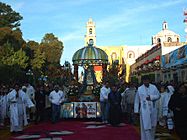 |
Huamantla | Tlaxcala | 2007 |
| 31 | 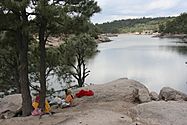 |
Creel | Chihuahua | 2007 |
| 32 |  |
Capulálpam de Méndez | Oaxaca | 2007 |
| 33 | 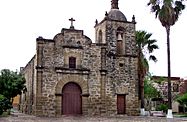 |
Ciudad Mier | Tamaulipas | 2007 |
| 34 |  |
El Fuerte | Sinaloa | 2009 |
| 35 | 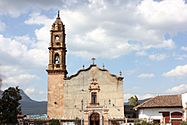 |
Santa Clara del Cobre | Michoacán | 2010 |
| 36 |  |
Tapijulapa | Tabasco | 2010 |
| 37 | 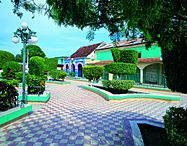 |
Palizada | Campeche | 2010 |
| 38 | 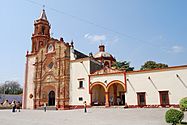 |
Jalpan de Serra | Querétaro | 2010 |
| 39 |  |
Malinalco | México | 2010 |
| 40 | 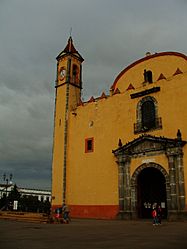 |
Zacatlán | Puebla | 2011 |
| 41 | 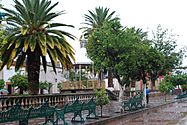 |
Teúl de González Ortega | Zacatecas | 2011 |
| 42 | 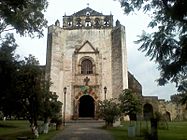 |
Tlayacapan | Morelos | 2011 |
| 43 | 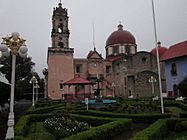 |
Mineral del Chico | Hidalgo | 2011 |
| 44 |  |
Cadereyta de Montes | Querétaro | 2011 |
| 45 |  |
Tula | Tamaulipas | 2011 |
| 46 |  |
El Oro de Hidalgo | México | 2011 |
| 47 |  |
Xico | Veracruz | 2011 |
| 48 | 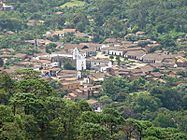 |
San Sebastián del Oeste | Jalisco | 2011 |
| 49 | 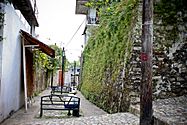 |
Xilitla | San Luis Potosí | 2011 |
| 50 |  |
Mineral de Pozos | Guanajuato | 2012 |
| 51 | 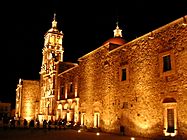 |
Sombrerete | Zacatecas | 2012 |
| 52 | 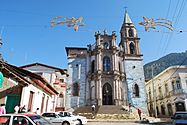 |
Angangueo | Michoacán | 2012 |
| 53 |  |
Cuatrociénegas de Carranza | Coahuila | 2012 |
| 54 |  |
Magdalena de Kino | Sonora | 2012 |
| 55 |  |
Pahuatlán | Puebla | 2012 |
| 56 | 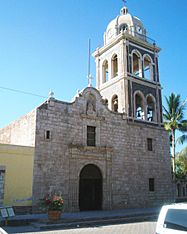 |
Loreto | Baja California Sur | 2012 |
| 57 |  |
Valladolid | Yucatán | 2012 |
| 58 |  |
Metepec | México | 2012 |
| 59 | 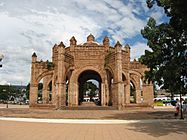 |
Chiapa de Corzo | Chiapas | 2012 |
| 60 | 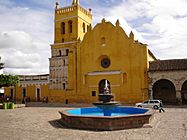 |
Comitán | Chiapas | 2012 |
| 61 |  |
Huichapan | Hidalgo | 2012 |
| 62 |  |
Tequisquiapan | Querétaro | 2012 |
| 63 | Batopilas | Chihuahua | 2012 | |
| 64 |  |
Chignahuapan | Puebla | 2012 |
| 65 | 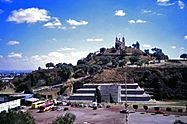 |
Cholula (San Pedro y San Andrés) | Puebla | 2012 |
| 66 | 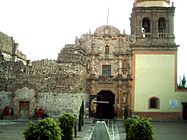 |
Pinos | Zacatecas | 2012 |
| 67 |  |
Lagos de Moreno | Jalisco | 2012 |
| 68 |  |
Tacámbaro | Michoacán | 2012 |
| 69 | 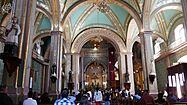 |
Calvillo | Aguascalientes | 2012 |
| 70 | 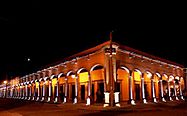 |
Nochistlán | Zacatecas | 2012 |
| 71 | 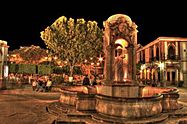 |
Jiquilpan | Michoacán | 2012 |
| 72 | 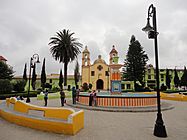 |
Tlatlauquitepec | Puebla | 2012 |
| 73 | 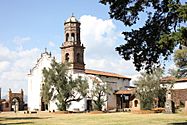 |
Tzintzuntzan | Michoacán | 2012 |
| 74 | 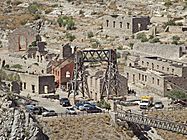 |
Mapimí | Durango | 2012 |
| 75 |  |
Papantla | Veracruz | 2012 |
| 76 | 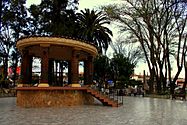 |
Tecate | Baja California | 2012 |
| 77 | 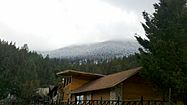 |
Arteaga | Coahuila | 2012 |
| 78 | 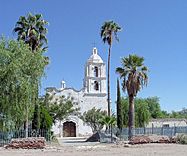 |
Viesca | Coahuila | 2012 |
| 79 | 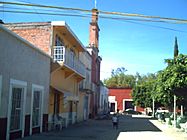 |
Jalpa de Cánovas | Guanajuato | 2012 |
| 80 |  |
Salvatierra | Guanajuato | 2012 |
| 81 | 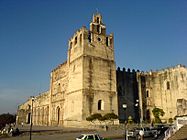 |
Yuriria | Guanajuato | 2012 |
| 82 | 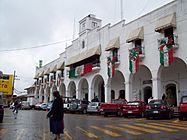 |
Xicotepec | Puebla | 2012 |
| 83 | 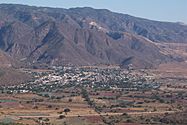 |
Jala | Nayarit | 2012 |
| 84 | 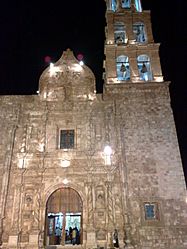 |
El Rosario | Sinaloa | 2012 |
| 85 |  |
Aculco De Espinoza | México | 2015 |
| 86 | 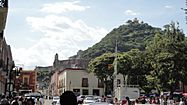 |
Atlixco | Puebla | 2015 |
| 87 | Candela | Coahuila | 2015 | |
| 88 | 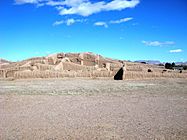 |
Casas Grandes | Chihuahua | 2015 |
| 89 | 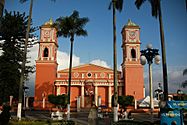 |
Coscomatepec de Bravo | Veracruz | 2015 |
| 90 | 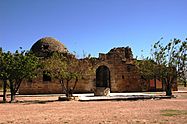 |
Guerrero | Coahuila | 2015 |
| 91 | 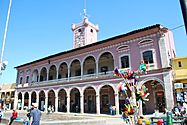 |
Huauchinango | Puebla | 2015 |
| 92 |  |
Huautla de Jiménez | Oaxaca | 2015 |
| 93 | 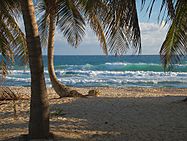 |
Isla Mujeres | Quintana Roo | 2015 |
| 94 | 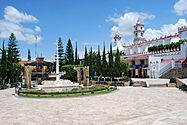 |
Ixtapan de la Sal | México | 2015 |
| 95 |  |
Linares | Nuevo León | 2015 |
| 96 | 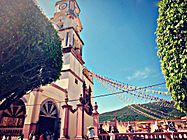 |
Mascota | Jalisco | 2015 |
| 97 | 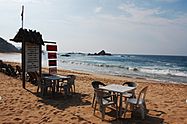 |
Mazunte | Oaxaca | 2015 |
| 98 | 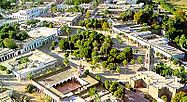 |
Mocorito | Sinaloa | 2015 |
| 99 |  |
Orizaba | Veracruz | 2015 |
| 100 | 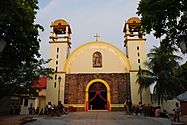 |
Palenque | Chiapas | 2015 |
| 101 | 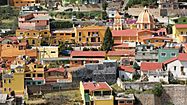 |
San Joaquín | Querétaro | 2015 |
| 102 |  |
San José de Gracia | Aguascalientes | 2015 |
| 103 | 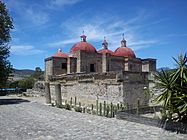 |
San Pablo Villa de Mitla | Oaxaca | 2015 |
| 104 | 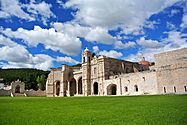 |
San Pedro y San Pablo Teposcolula | Oaxaca | 2015 |
| 105 |  |
Sayulita | Nayarit | 2015 |
| 106 |  |
Talpa de Allende | Jalisco | 2015 |
| 107 | 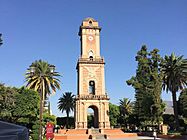 |
Tecozautla | Hidalgo | 2015 |
| 108 | 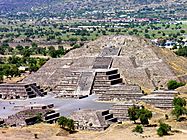 |
Teotihuacán | México | 2015 |
| 109 |  |
Tlaxco | Tlaxcala | 2015 |
| 110 | 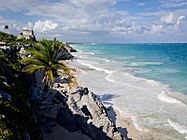 |
Tulum | Quintana Roo | 2015 |
| 111 | 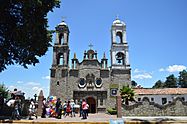 |
Villa del Carbón | México | 2015 |
| 112 | 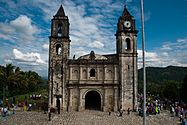 |
Zozocolco de Hidalgo | Veracruz | 2015 |
| 113 | 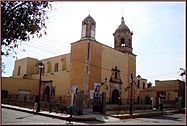 |
Nombre de Dios | Durango | 2018 |
| 114 | 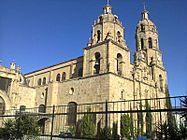 |
Melchor Múzquiz | Coahuila | 2018 |
| 115 | 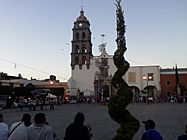 |
Comonfort | Guanajuato | 2018 |
| 116 | 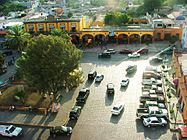 |
Zimapán | Hidalgo | 2018 |
| 117 | 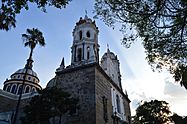 |
Tlaquepaque | Jalisco | 2018 |
| 118 | Compostela | Nayarit | 2018 | |
| 119 | 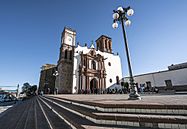 |
Amealco de Bonfil | Querétaro | 2018 |
| 120 | 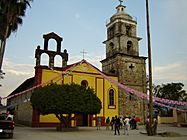 |
Aquismón | San Luis Potosí | 2018 |
| 121 | Bustamante | Nuevo León | 2018 | |
| 122 | 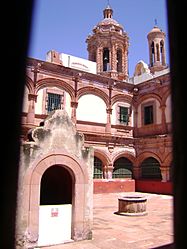 |
Guadalupe | Zacatecas | 2018 |
| 123 |  |
Isla Aguada | Campeche | 2020 |
| 124 |  |
Zempoala | Hidalgo | 2020 |
| 125 |  |
Ajijic | Jalisco | 2020 |
| 126 | 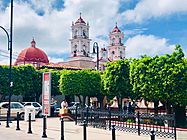 |
Tonatico | México | 2020 |
| 127 | 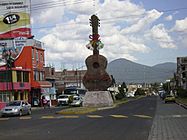 |
Paracho | Michoacán | 2020 |
| 128 | 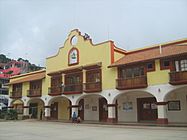 |
Santa Catarina Juquila | Oaxaca | 2020 |
| 129 | 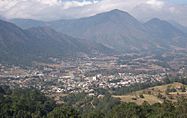 |
Tetela de Ocampo | Puebla | 2020 |
| 130 |  |
Santa María del Río | San Luis Potosí | 2020 |
| 131 | 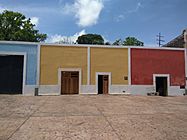 |
Maní | Yucatán | 2020 |
| 132 | 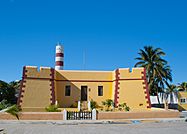 |
Sisal | Yucatán | 2020 |
| 133 | 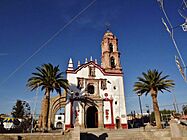 |
Pabellón de Hidalgo | Aguascalientes | 2023 |
| 134 | 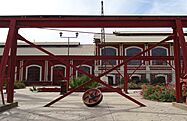 |
Santa Rosalía | Baja California Sur | 2023 |
| 135 | 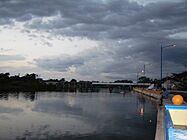 |
Candelaria | Campeche | 2023 |
| 136 | 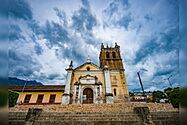 |
Copainalá | Chiapas | 2023 |
| 137 | 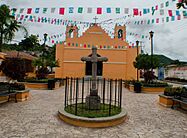 |
Ocozocoautla de Espinosa | Chiapas | 2023 |
| 138 | 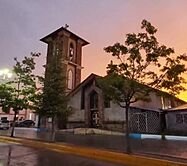 |
Guachochi | Chihuahua | 2023 |
| 139 |  |
Hidalgo del Parral | Chihuahua | 2023 |
| 140 | 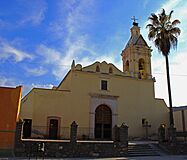 |
General Cepeda | Coahuila | 2023 |
| 141 |  |
Ixcateopan de Cuauhtémoc | Guerrero | 2023 |
| 142 |  |
Zihuatanejo | Guerrero | 2023 |
| 143 | 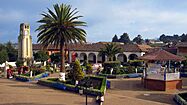 |
Acaxochitlán | Hidalgo | 2023 |
| 144 | 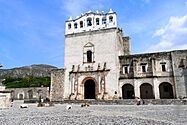 |
Metztitlán | Hidalgo | 2023 |
| 145 | 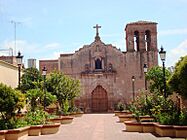 |
Cocula | Jalisco | 2023 |
| 146 |  |
Sayula | Jalisco | 2023 |
| 147 | 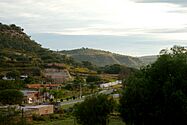 |
Temacapulín | Jalisco | 2023 |
| 148 |  |
Jilotepec | México | 2023 |
| 149 | 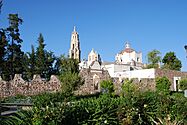 |
Otumba | México | 2023 |
| 150 | 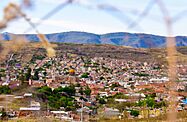 |
Cotija | Michoacán | 2023 |
| 151 | Tlaltizapán de Zapata | Morelos | 2023 | |
| 152 |  |
Xochitepec | Morelos | 2023 |
| 153 | 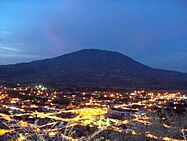 |
Ahuacatlán | Nayarit | 2023 |
| 154 |  |
Amatlán de Cañas | Nayarit | 2023 |
| 155 | 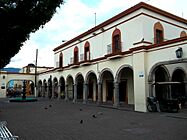 |
Ixtlán del Río | Nayarit | 2023 |
| 156 | 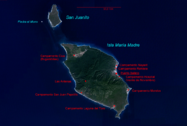 |
Puerto Balleto | Nayarit | 2023 |
| 157 |  |
San Blas | Nayarit | 2023 |
| 158 | 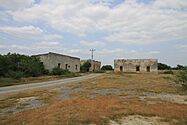 |
General Terán | Nuevo León | 2023 |
| 159 | 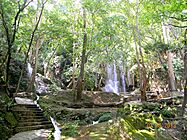 |
General Zaragoza | Nuevo León | 2023 |
| 160 | 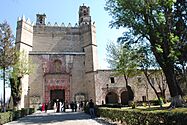 |
Huejotzingo | Puebla | 2023 |
| 161 | 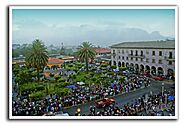 |
Teziutlán | Puebla | 2023 |
| 162 |  |
Pinal de Amoles | Querétaro | 2023 |
| 163 | 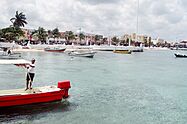 |
Cozumel | Quintana Roo | 2023 |
| 164 | 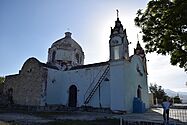 |
Ciudad del Maíz | San Luis Potosí | 2023 |
| 165 | Tierra Nueva | San Luis Potosí | 2023 | |
| 166 | 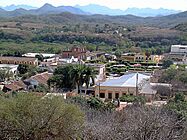 |
San Ignacio | Sinaloa | 2023 |
| 167 | 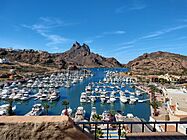 |
San Carlos | Sonora | 2023 |
| 168 | 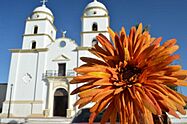 |
Ures | Sonora | 2023 |
| 169 | 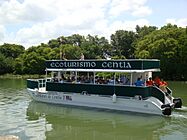 |
Frontera | Tabasco | 2023 |
| 170 | 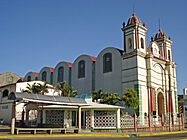 |
Teapa | Tabasco | 2023 |
| 171 | 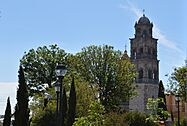 |
Ixtenco | Tlaxcala | 2023 |
| 172 | 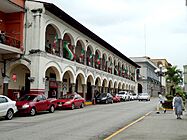 |
Córdoba | Veracruz | 2023 |
| 173 | 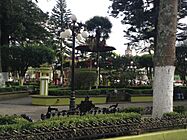 |
Naolinco de Victoria | Veracruz | 2023 |
| 174 | 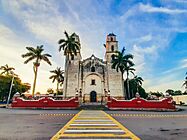 |
Espita | Yucatán | 2023 |
| 175 | 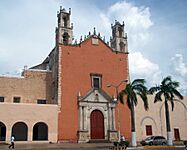 |
Motul | Yucatán | 2023 |
| 176 | 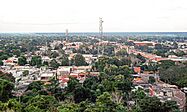 |
Tekax | Yucatán | 2023 |
| 177 |  |
Villanueva | Zacatecas | 2023 |
Towns No Longer in the Program
Below are towns that were once part of the program but had their titles removed. This happened because they didn't meet the program's standards during checks. However, two of them later got their titles back! One town, San Miguel de Allende, was removed because it received an even higher honor: becoming a UNESCO World Heritage Site.
| # | Image | Town | State | Year Added | Year Removed |
|---|---|---|---|---|---|
| 1 | 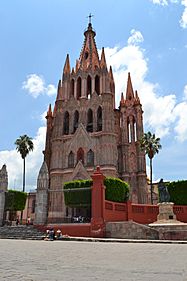 |
San Miguel de Allende | Guanajuato | 2002 | In 2008, it was removed because it became a UNESCO World Heritage Site. |
| 2 | 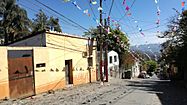 |
Tepoztlán | Morelos | 2001 | Title removed in 2009; given back in 2010. |
| 3 | 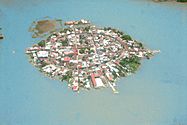 |
Mexcaltitlán | Nayarit | 2001 | Title removed in 2009; given back in 2020. |
More About the Program
Some governments have tried to stop the program for political reasons. But because the program is based on local communities and helps them grow, these attempts have not worked. Statistics show that the Pueblo Mágico program has brought a lot of economic value and created many jobs for the towns involved. The program is seen as a great example both in Mexico and by other countries around the world.
See also
 In Spanish: Pueblos Mágicos para niños
In Spanish: Pueblos Mágicos para niños


